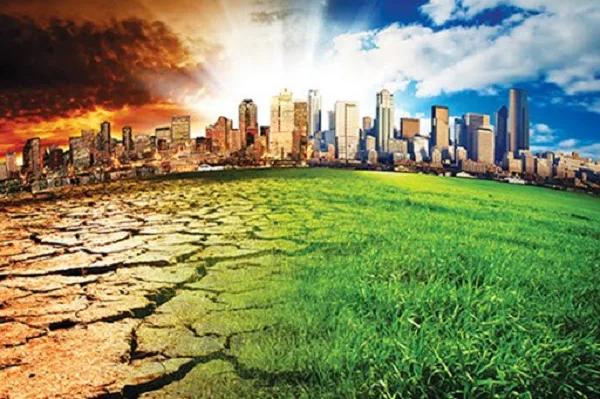“We have changed our environment so radically that now, in order to exist in it, we must change ourselves” – Norbert Wiener
by: NATASHA MALINKA MINOVSKA
The environment, its protection and preservation, is one of the most current topics nowadays, which is debated among members of the general population, the expert and political public.
Despite the broad range of interpretations of the word environment, the term natural surrounding is used as a synonym most often. By analogy, as follows: water, air and soil, then plants, animals and microorganisms, and lastly, economic, social and political elements created by man.
An entire complex of physical, biological and cultural elements is interconnected in different ways, both at the individual and collective level. For the existence of life on Earth, the natural surrounding (environment) is of key importance, which enables survival of the entire living world.
The word environment dates back to the late 1970s and comes from the French word “environ”, which means surrounding. It includes: natural, biotic (human beings, plants, animals, microbes) and abiotic factors (light, water, air, soil), as well as the created values, whose complex mutual relations comprise the surrounding, namely, the space and living conditions.

There are numerous definitions for environment, such as:
– “The aggregate, all of the external forces, influences and conditions, which affect the life, nature, behaviour and the growth, development and maturation of living organisms”. (Douglas and Holland)
– “The sum total of all conditions and influences that affect the development and life of all organs”. (T.N. Khoshoo)
– “Physical surroundings that are common to all living beings and include air-space, water, land, plant and wildlife”. (Simon Ball and Stuart Bell)
– “An inseparable whole system constituted by physical, chemical, biological, social and cultural elements, which are interlinked individually and collectively in myriad ways”. (Kalavathy)
The survival of the human community in the past had often been endangered by natural disasters, epidemics, wars, lack of food and other influences at the local level.
Unlike the existential crises in the past, today’s crises are not from natural disasters of a local character, but of global discord of the entire industrial civilization in an ideological – material sense.

Man and environment are inseparably connected. He, as an individual, not only lives in it, but compelled by the desire to gain material goods, constantly uses its resources and acts on them.
With the disappearance of the harmonious relationship between man and nature, the process of polluting and destroying the environment begins. Since 1990, key environmental problems have been: the greenhouse effect and global warming, the occurrence of ozone holes, acid rain and destruction of tropical forests, pollution of air, water, soil, soil erosion, deforestation.
Real awareness awakening and greater interest in the environment and its protection primarily appear in the most developed industrial countries of the West, and later the interest spreads in other countries around the world. Environmental protection is an environmental discipline that studies human influence on the environment.
The concept of environmental protection implies a sum of activities of man, whose task is to preserve the unpolluted, non-degraded environment or its individual elements, aesthetic characteristics and functions (of the environment).
The approach should be considered as multidisciplinary, since it presumes a continuous obligation of all citizens in society. Any disturbance in the condition of the environment leads to environmental disturbances and disturbances of social relations, which are inter-related and conditioned.

As a result of the raised awareness level of the states on the inter-connection of the processes in nature, the emphasized degradation of the environment and human’s influence on it, in the second half of the XX century several important declarations are adopted in the field of environmental protection, and many international agreements a made under the auspices of the UN:
- At the first international conference in Stockholm in 1972, the Stockholm Declaration on the Human Environment was adopted.
- At the second international conference in Rio de Janeiro in 1972, the following were adopted: Rio Declaration, Agenda 21, UN Framework Convention for the protection and development of the environment, Convention of Biological Diversity and и Non-legally binding declaration of principles for achieving global consensus on forest management.
- In Kyoto in 1997, the UN Framework Convention on Climate Change was adopted.
Worldwide, it is estimate that there are more than 700 multilateral agreements and more than 1000 bilateral agreements in the context of various aspects of the environment, while the European Union has approved over 200 regulations on environmental protection.
According to Article 31 of the Universal Declaration of Human Rights: “Every human being has the right to maintain the ecological balance in his environment that he shares with all other living things, animals and plants, whose survival, and the guarantee of his own survival, should be secured”.
That would mean that the right to life as a vital basis for enjoying all other human rights, also includes the right to environmental protection, while a preserved and protected environment is a basis for enjoying the right to life.
Published on: greencivil.mk
—
Links:
https://pdfcookie.com/download/udzbenik-zastita-okolisa-g27ozxg9k0v0
https://www.researchgate.net/publication/316919015_Zastita_zivotne_sredine
https://www.slideshare.net/Eva983/osnovni-pojmovi-i-principi-ekologije-i-zatite-ivotne-sredine
https://www.ucg.ac.me/skladiste/blog_22813/objava_69651/fajlovi/Predavanje%207%20_1_.pdf
https://vdocuments.mx/2013-skripta-zastita-okolisa.html
https://eko.zagreb.hr/zastita-okolisa/10
http://geol.pmf.hr/~eprohic/Legislativa.u.zastiti.okolisa2.pdf
https://studymalaysia.com/education/top-stories/what-is-environmental-protection-all-about
https://inspirajournals.com/uploads/Issues/159348613.pdf
https://scindeks-clanci.ceon.rs/data/pdf/2217-8821/2015/2217-88211507169S.pdf
Translation: N. Cvetkovska

